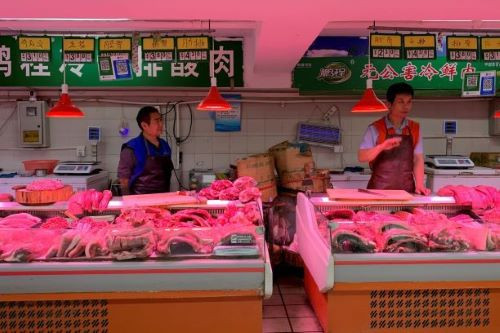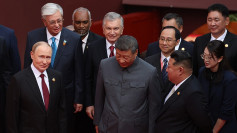Fueled by the raging Asian Swine Fever (ASF) epidemic, China's pork prices surged by an incredible 110.2% in November year-on-year, according to the latest data from the National Bureau of Statistics (NBS). China is the world's largest consumer and producer of pork.
The more than doubling of pork prices was a key factor in China's consumer price index -- the key indicator of inflation -- rising 4.5% year-on-year in November, its biggest jump since January 2012. Also as a consequence of ASF, producer prices in China fell 1.4% from a year ago in November. The drop indicates a fall in supply, which is leading to higher prices.
There were more than 440 million pigs throughout China, which accounted for 57% of the global total pig population of 769 million in 2018. China produces 55 million metric tons of pork annually.
ASF, however, reduced China's pig population by half in the first from January to August 2019. The pig population will likely shrink by 55% by the end of 2019, estimates Rabobank, a leading Dutch multinational bank.
Last week, China waived import tariffs for some soybeans and pork shipments from the United States. Practically all of the soybeans imported by China go to feeding its massive pig population.
The massive drop in pork production has seen Chinese consumers buy more beef, mutton, chicken, duck, and eggs rose. As a result, prices of these foods rose from between 11.8% and 25.7% in November year-on-year.
"Food inflation continued to climb on the back of disruptions to pork supply caused by African swine fever -- pork price inflation inched up from 108 percent year-on-year to 110 percent last month," said Julian Evans-Pritchard, senior China economist at research consultancy Capital Economics.
"While non-food inflation, inched up slightly, it remains much below 12-month average. Core inflation (which strips out both food and energy prices) inched down slightly,"
There is good news on the horizon, however. China's massive pig herd increased by 2% in November compared to October. This was the second consecutive month that saw an increase in the breeding herd inventory. Sow stocks were 4$ higher in November compared to October.
The trend of rising food prices isn't expected to continue much longer, said Evans-Pritchard and Martin Rasmussen.
"The pick-up in food inflation will reverse soon and broader demand-side price pressures remain weak, with producer prices falling and core consumer price inflation at a three-year low," they said in a note to investors on Tuesday.






